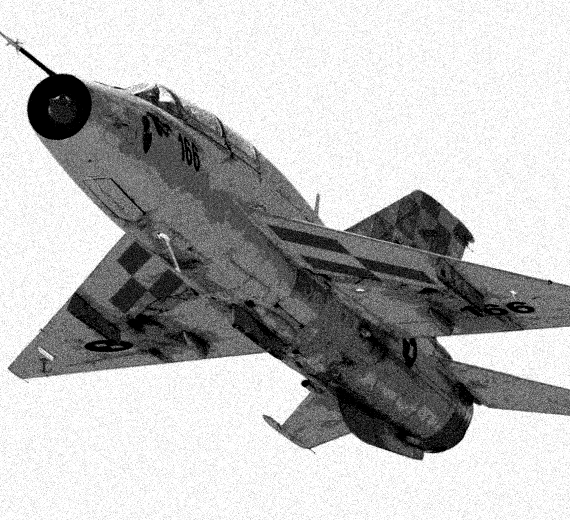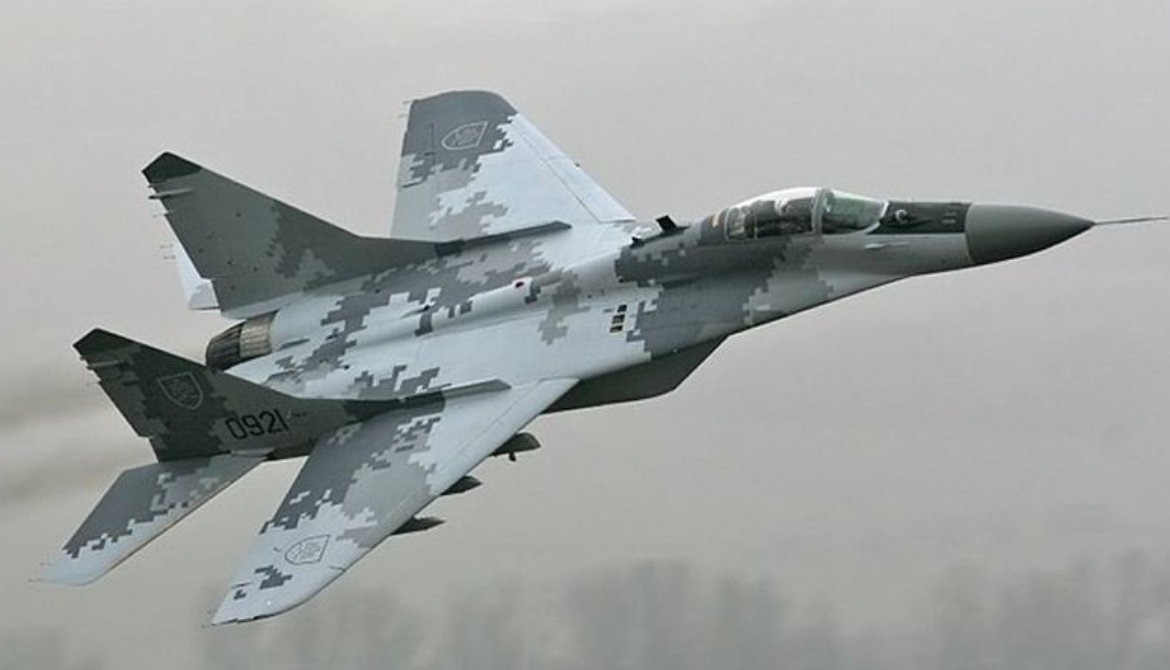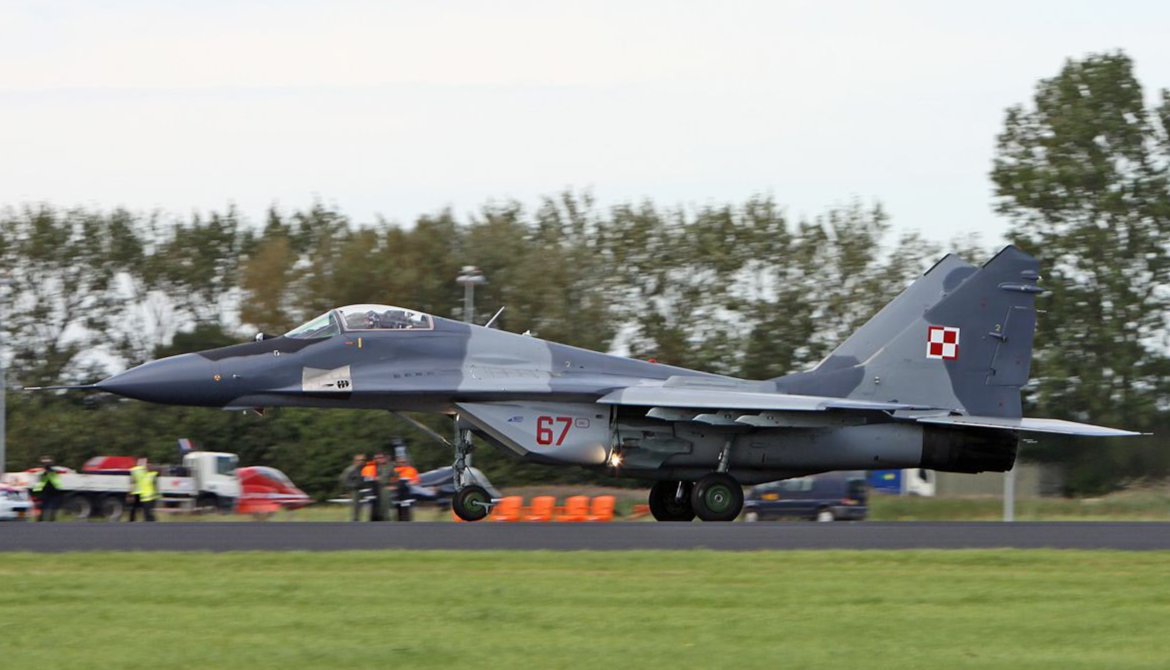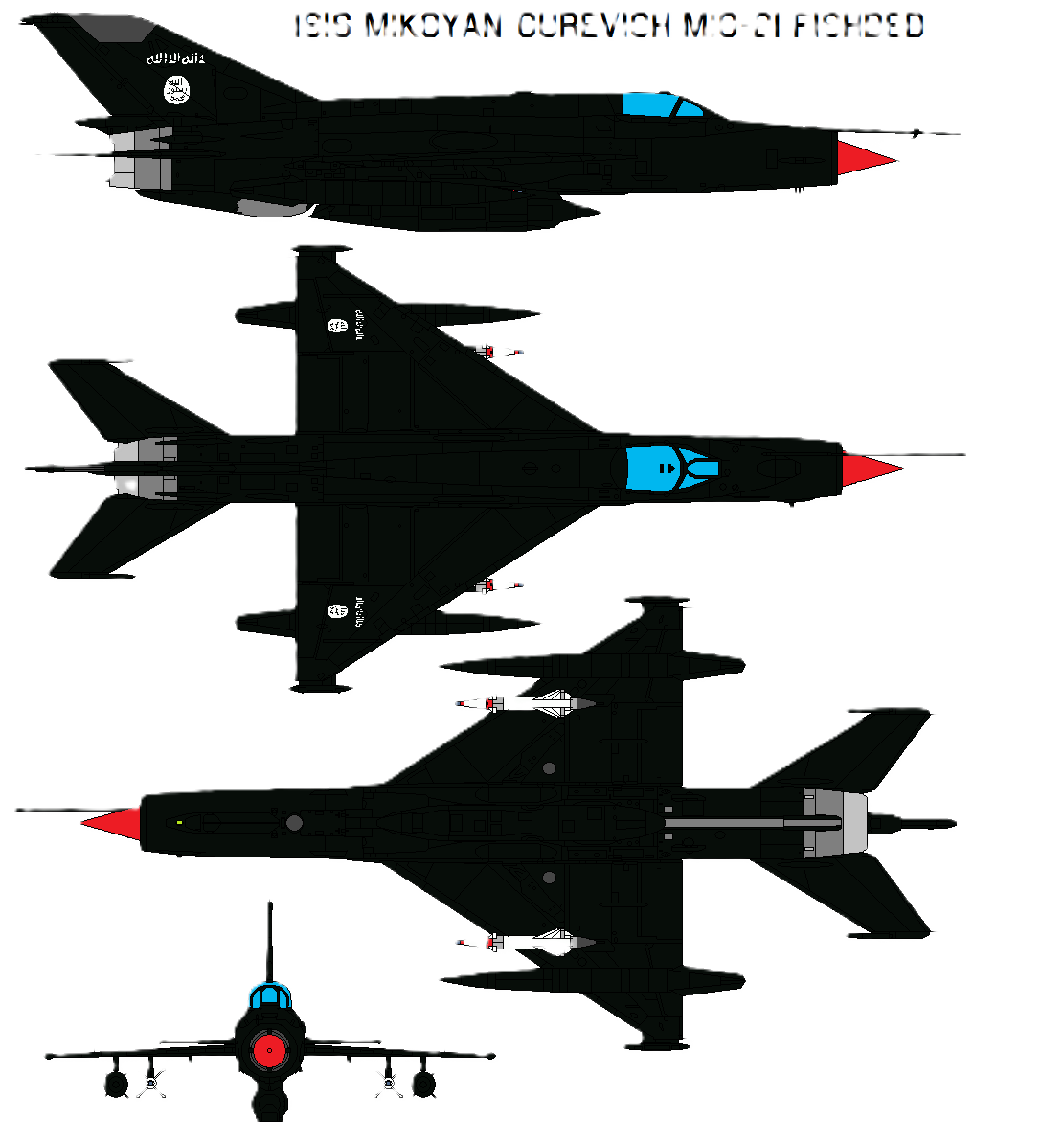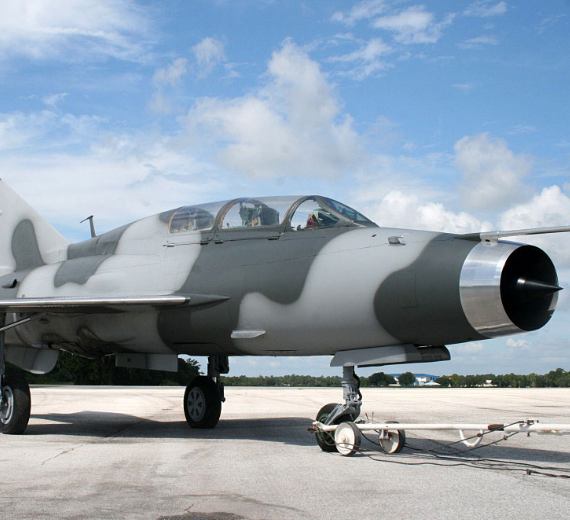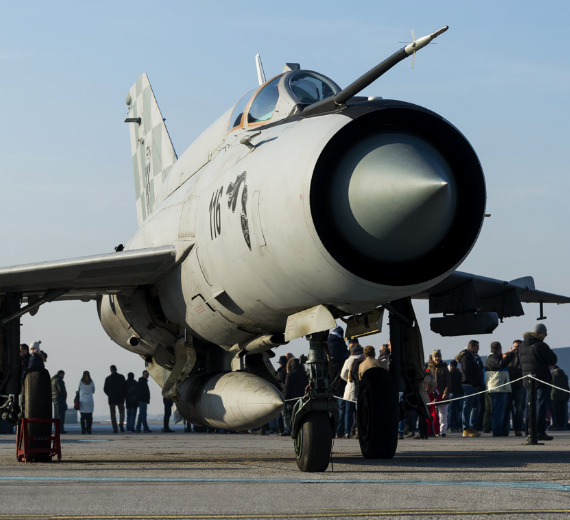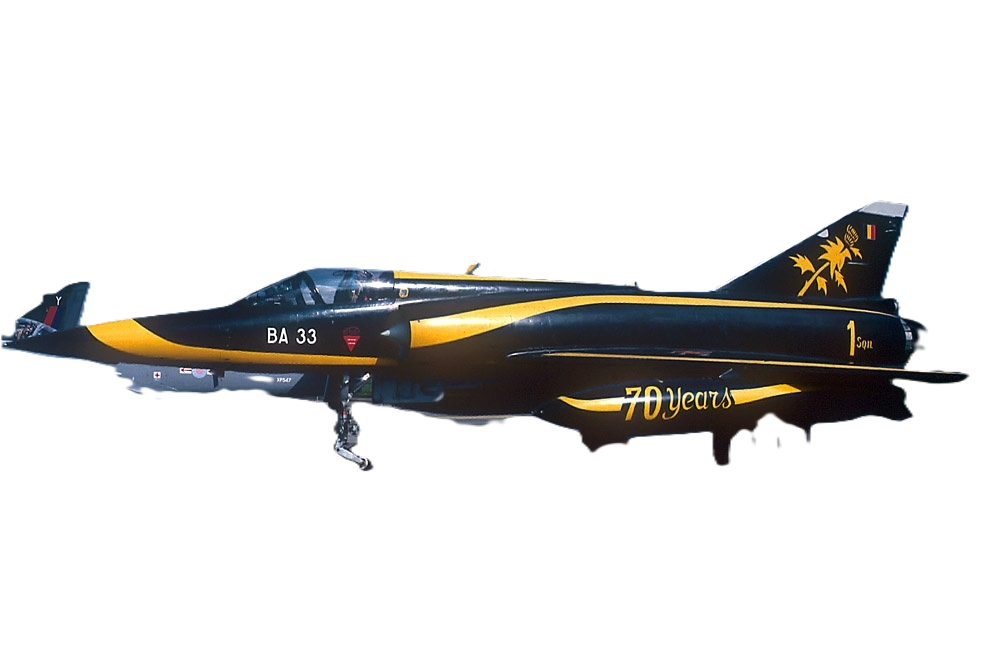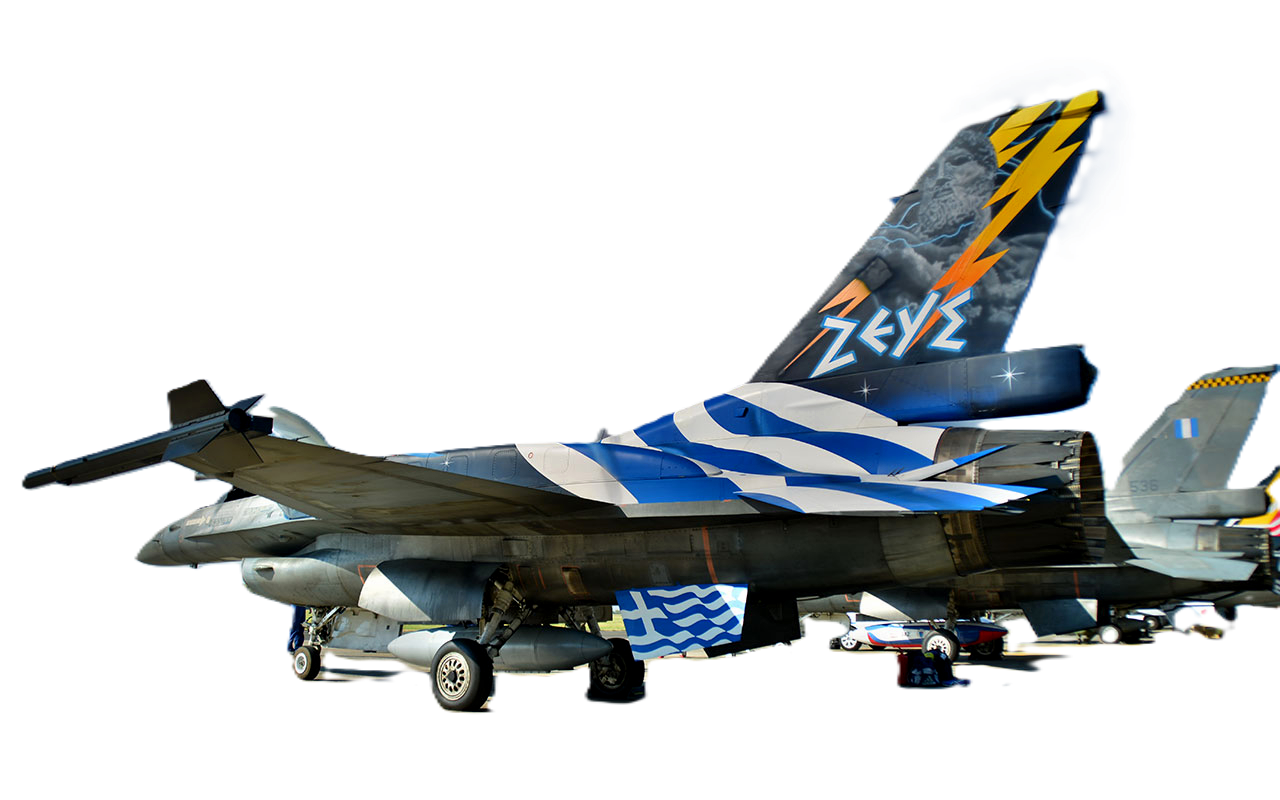Russian Aircraft "Mig"
MiG-21 Fishbed
 |
|
| Croatian MiG-21BIS-D in flight | |
| Role | Fighter and interceptor aircraft |
|---|---|
| National origin | Soviet Union |
| Design group | Mikoyan-Gurevich |
| First flight | 16 June 1955 (Ye-4) |
| Introduction | 1959 (MiG-21F) |
| Status | In service |
| Primary users | Soviet Air Forces (historical) Indian Air Force |
| Produced | 1959–1985 |
| Number built | 11,496 (10,645 produced in the USSR, 840 in India, 194 in Czechoslovakia) |
| Variants | Chengdu J-7 |
|
|
.
History Russian Aircraft Corporation "Mig"
Mikoyan MiG-21 Fishbed
Nick name"Balalaika" or
"Ołówek", Polish for "pencil"

The Mikoyan-Gurevich MiG-21 (Russian: Микоян и Гуревич МиГ-21; NATO reporting name: Fishbed) is a supersonic jet fighter and interceptor aircraft, designed by the Mikoyan-Gurevich Design Bureau in the Soviet Union. Its nicknames include: "Balalaika", because its planform resembles the stringed musical instrument of the same name; "Ołówek", Polish for "pencil", due to the shape of its fuselage, and "Én Bạc", meaning "silver swallow", in Vietnamese.
Approximately 60 countries across four continents have flown the MiG-21, and it still serves many nations seven decades after its maiden flight. It set aviation records, becoming the most-produced supersonic jet aircraft in aviation history, the most-produced combat aircraft since the Korean War and, previously, the longest production run of any combat aircraft.
Design





The MiG-21 was the first successful Soviet aircraft combining fighter and interceptor characteristics in a single aircraft. It was a lightweight fighter, achieving Mach 2 with a relatively low-powered afterburning turbojet, and is thus comparable to the American Lockheed F-104 Starfighter and Northrop F-5 Freedom Fighter and the French Dassault Mirage III. Its basic layout was used for numerous other Soviet designs; delta-winged aircraft included the Su-9 interceptor and fast E-150 prototype from the MiG bureau, while the successful mass-produced frontline fighter Su-7 and Mikoyan's I-75 experimental interceptor combined a similar fuselage shape with swept-back wings. However, the characteristic layout with the shock cone and front air intake did not see widespread use outside the USSR and ultimately proved to have limited development potential, mainly due to the small available space for the radar.
0
KmCeiling
0
KmCombat RANGE
0
MachAircraft Speed
0
Max Crew
Photo Gallery
Russian Aircraft Corporation "Mig"
Mikoyan MiG-21 Fishbed
Nick name"Balalaika"


Russian Aircraft Corporation "Mig"
Mikoyan MiG-21 Fishbed
Nick name"Balalaika"
General Info
-
-
-
-
- Crew: 1
- Length: 14.7 m (48 ft 3 in) excluding pitot boom
- Wingspan: 7.154 m (23 ft 6 in)
- Height: 4.1 m (13 ft 5 in)
- Wing area: 23 m2 (250 sq ft)
-
-
-
Powerplant
-
-
-
-
- Max takeoff weight: 8,800 kg (19,401 lb) unprepared or metal planking runway
-
-
-
- 9,800 kg (21,605 lb) paved runway with standard wheels and tyres
- 10,400 kg (22,928 lb) paved runway with larger wheels and tyres
-
-
- Powerplant: 1 × Tumansky R-25-300 afterburning turbojet, 40.18 kN (9,030 lbf) thrust dry, 69.58 kN (15,640 lbf) with afterburner
-
-
-
Performance
-
- Maximum speed: 2,175 km/h (1,351 mph, 1,174 kn) / M2.05 at 13,000 m (43,000 ft)
-
-
- Range: 660 km (410 mi, 360 nmi) clean at 11,000 m (36,000 ft)
-
-
-
- 604 km (375 mi; 326 nmi) at 11,000 m (36,000 ft) with two R-3S missiles
-
-
- Service ceiling: 17,500 m (57,400 ft)
Armament
- Guns: 1 × internal 23 mm Gryazev-Shipunov GSh-23L autocannon with 200 rounds
- Hardpoints: 5 (4 underwing + 1 ventral, reserved for fuel droptanks) , with provisions to carry combinations of:
-
-
- Bombs: 2 × 500 kg (1,100 lb) and 2 × 250 kg bombs
.
Links to Youtube & Others
The MiG-21 jet fighter was a continuation of Soviet jet fighters, starting with the subsonic MiG-15 and MiG-17, and the supersonic MiG-19. A number of experimental Mach 2 Soviet designs were based on nose intakes with either swept-back wings, such as the Sukhoi Su-7, or tailed deltas.
Russian Aircraft Mig
MiG-21 Fishbed
India is the largest operator of MiG-21s. In 1961, the Indian Air Force (IAF) opted to purchase the MiG-21 over several other Western competitors.
Youtube Link
The plane has been plagued by safety problems. Since 1970 more than 170 Indian pilots[12] and 40 civilians have been killed in MiG-21 accidents.

